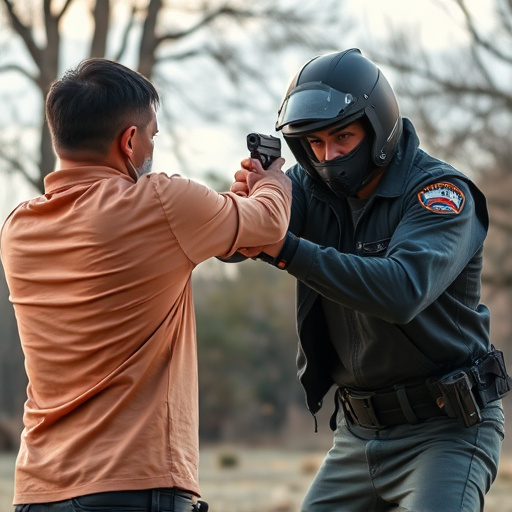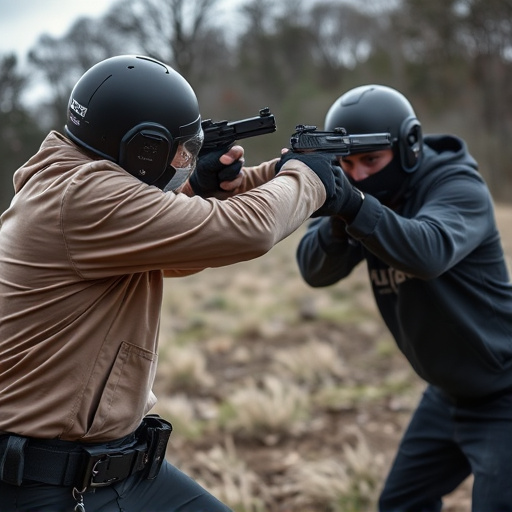Understanding Taser deployment and its impact on paralysis duration is crucial for safe and effective use, especially by law enforcement. The latest advancements in stun gun technology focus on highly discreet designs integrated into everyday items like keys, pens, or jewelry, offering powerful protection without drawing attention. However, the deployment of these tools requires a careful balance between public safety and individual rights, with strict legal and ethical considerations to mitigate health risks associated with their use. Training officers to operate them responsibly, while adhering to regional legal frameworks, is essential for upholding ethical standards.
“In recent years, taser deployment has sparked intense debate due to its impact on human paralysis durations. This article delves into the intricate relationship between taser usage and the length of paralysis it induces. We explore critical factors influencing paralysis duration, with a particular focus on the role of concealable stun gun design as a potential game-changer in minimizing immobilization time. Additionally, we address legal and ethical considerations that follow taser deployment, offering insights into this complex issue.”
- Understanding Taser Deployment and Its Impact on Paralysis Duration
- Factors Affecting the Length of Paralysis After Taser Use
- The Role of Concealable Stun Gun Design in Minimizing Paralysis Time
- Legal and Ethical Considerations Following Taser Deployment
Understanding Taser Deployment and Its Impact on Paralysis Duration

Understanding Taser deployment and its impact on paralysis duration is crucial in understanding the effectiveness and potential risks associated with these devices. Tasers, known for their most concealable stun gun design, use electrical current to disrupt muscle control, causing temporary paralysis. The duration of this paralysis varies depending on several factors including the model of Taser used, the number of shocks administered, and the individual’s physical condition. Studies suggest that while Tasers can quickly incapacitate a subject, the average paralysis duration is typically between 2-5 seconds, though it can extend up to 30 seconds with certain models.
The impact of Taser deployment on paralysis duration can be influenced by tactical considerations. For instance, aiming for specific body zones like the legs can prolong immobilization time due to the device’s ability to target muscle groups responsible for movement. However, excessive or repeated shocks may lead to desensitization, reducing the effectiveness and potentially extending overall downtime. Understanding these dynamics is essential for law enforcement and security professionals to ensure safe and effective use of Tasers while minimizing adverse effects on individuals targeted.
Factors Affecting the Length of Paralysis After Taser Use

The Role of Concealable Stun Gun Design in Minimizing Paralysis Time

Legal and Ethical Considerations Following Taser Deployment

Following the deployment of a Taser, legal and ethical considerations come into play, especially regarding the duration of paralysis it induces. The primary concern is ensuring that force used is necessary and proportionate to the threat presented. This is crucial as excessive or inappropriate use can lead to serious health complications or even death. Law enforcement agencies and authorities must adhere to strict protocols and guidelines to mitigate these risks.
In terms of the most concealable stun gun design, Tasers have evolved to include compact and discreet models, which can be easily hidden on the body. However, the focus should not solely be on concealment but also on the device’s effectiveness and safety features. Legal frameworks vary across regions, and officers must be trained to use these tools responsibly, considering the potential impact on individuals, especially when dealing with vulnerable populations or those with medical conditions. Ethical use of Tasers requires a balance between public safety and respect for individual rights.
Taser deployment, while intended for self-defense and law enforcement purposes, can lead to paralysis, with duration varying based on multiple factors. Understanding these factors, from the impact of current technology to legal considerations, is crucial for minimizing the time affected individuals experience disability. In this context, the discussion on the most concealable stun gun design emerges as a game changer, promising to reduce paralysis duration. However, ongoing research and responsible deployment practices are essential to ensure these tools are used effectively while mitigating potential harm. Legal and ethical frameworks must keep pace with technological advancements to guarantee fair and safe application.
